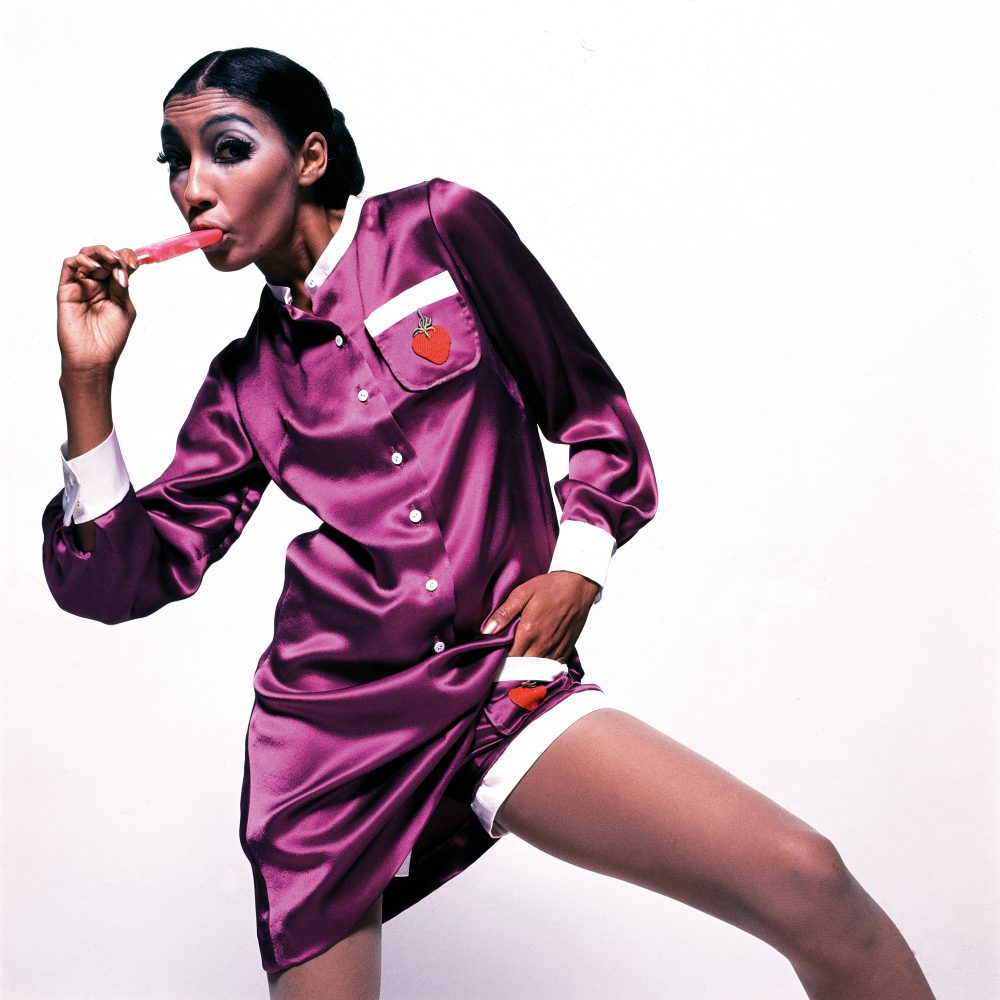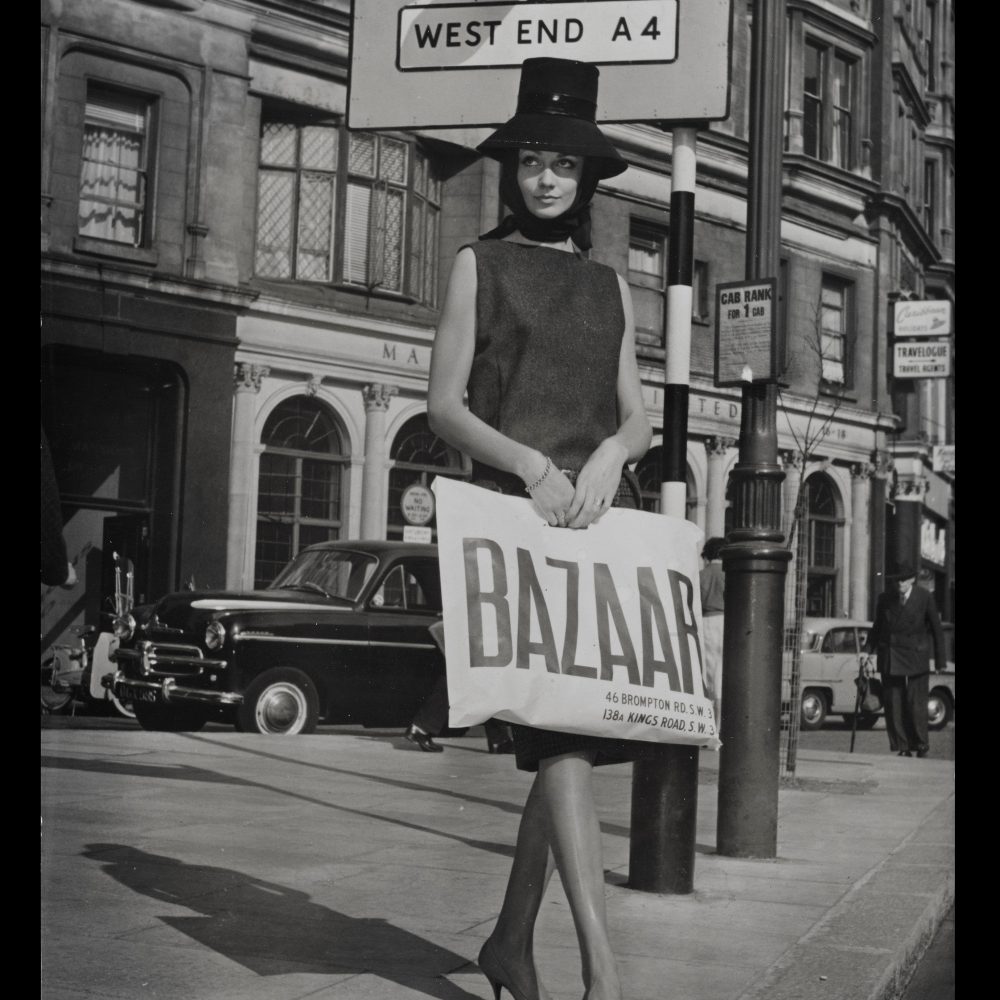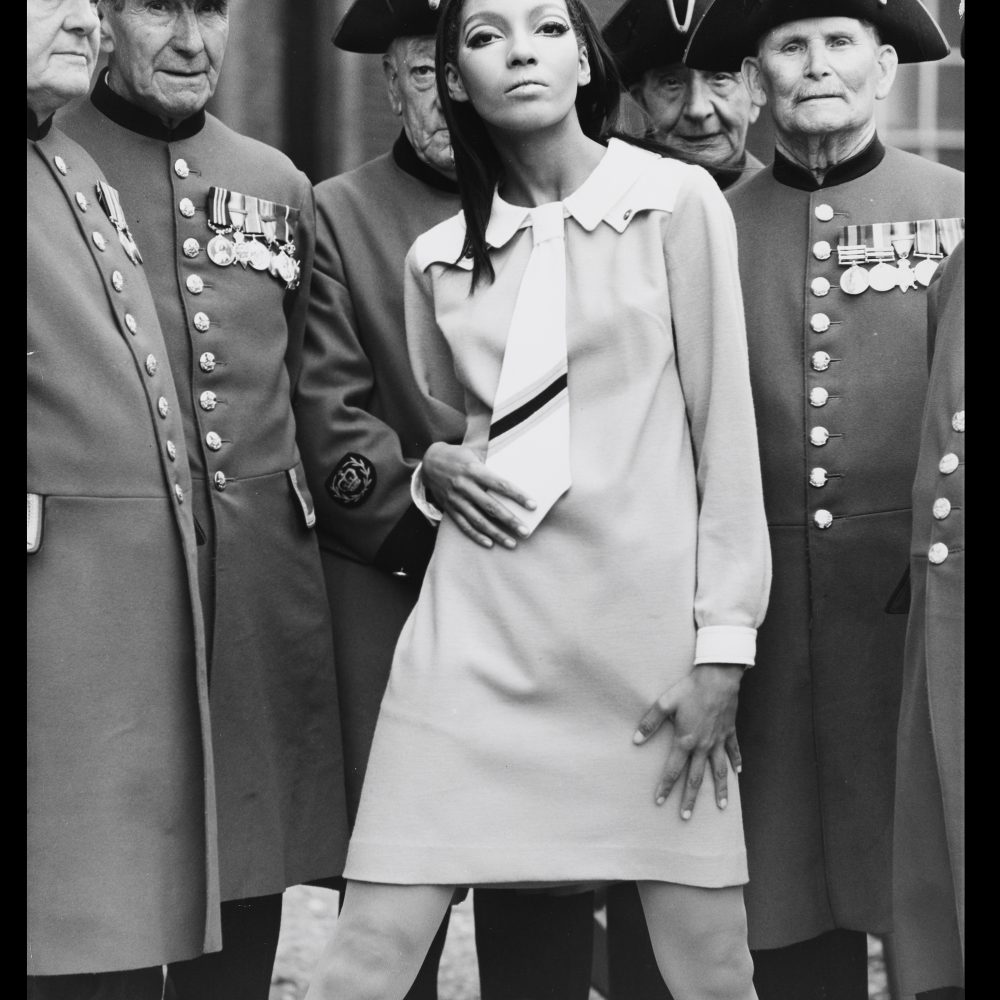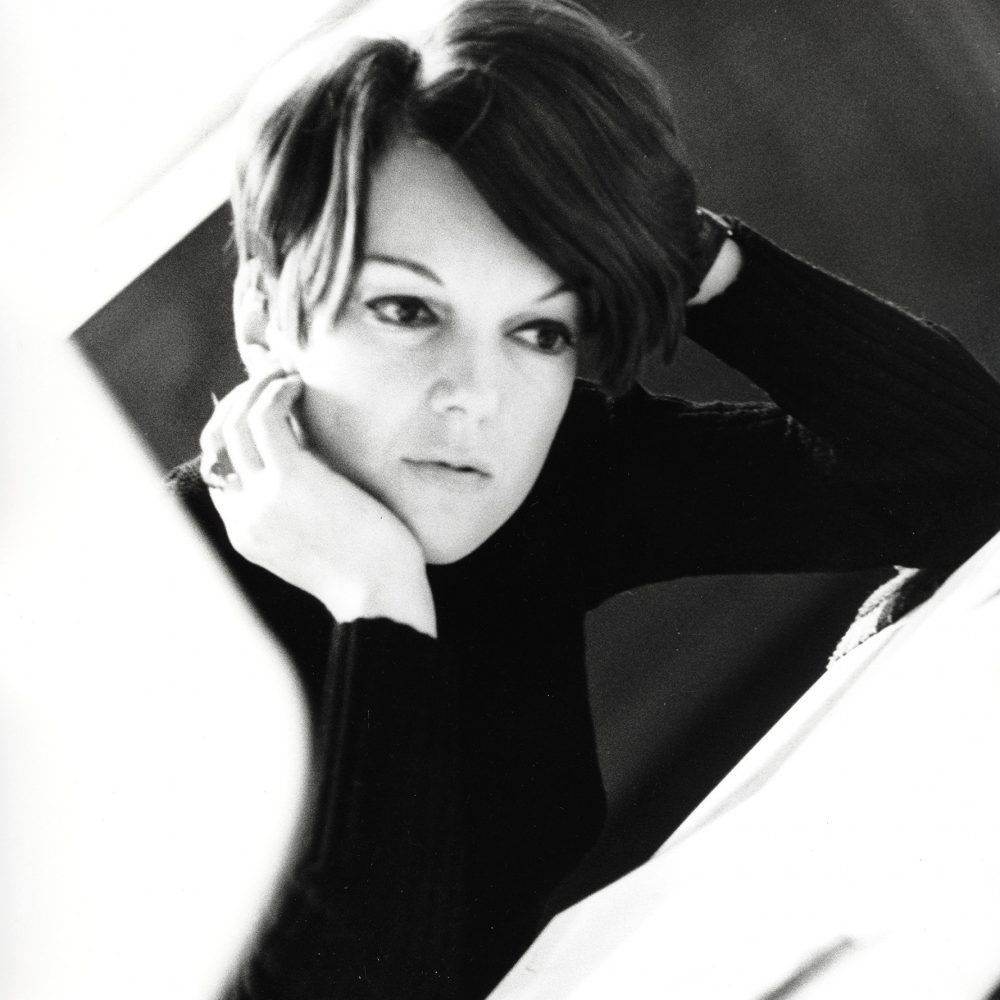Mary Quant and models at the Quant Afoot footwear collection launch, 1967 © PA Prints 2008
A new exhibition at the V&A showcases the fashion revolution launched by Mary Quant.
Miniskirts put Mary Quant on the map, it became a fashion icon and came to symbolise a new era for women.
The little skirt which made a big difference will no doubt be a stand out attraction in a new exhibition at London’s V&A showcasing the work and influence of the designer.
Examples of her famous designs from across the 1960s and 1970s will highlight the way in which she launched a fashion revolution on the high street. More than 200 items of clothing and accessories, including unseen pieces from Quant’s personal archive will form part of the exhibition.

Satin mini-dress and shorts by Mary Quant, photograph by Duffy, 1966 © Duffy Archive

Model holding a Bazaar bag c.1959 © Mary Quant Archive
Born and brought up in Blackheath, her Welsh schoolteacher parents refused to let the young Mary attend a fashion course so she studied illustration instead at Goldsmiths where she met her future husband Alexander Plunket Greene. After graduating in 1953 she began an apprenticeship at a high-end milliner.
Together with Plunket Greene and a friend, the three opened a restaurant in the basement of a house Plunket Greene bought in King’s Road, Chelsea, by this time fast becoming “the place to be”. But it was the boutique she opened on the ground floor, Bazaar, that was to pave the way for Quant’s career and change in fashions.
Starting with clothes bought wholesale, she soon switched it up a gear after the success of a pair of lounge pyjamas she had designed for the opening and began stocking the boutique with her own designs.
Working overnight to produce new stock for the shop, which continually offered new lines, customers came in search of the unique items at competitive prices.
Bazaar was making a name across London as one of the few shops selling an alternative to the more “mature” designs of traditional high fashion. And it wasn’t just the clothing that brought about the different approach – the boutique offered loud music, free drinks, extravagant window displays and extended opening hours that all helped to attract shoppers.
She drew her influences from the musicians, dancers and street chic as well as the Mods who were shaping London’s youth culture. Quant’s initial collections were modern, simple and wearable, she wanted “relaxed clothes suited to the actions of normal life” as epitomised by the miniskirt, named after her favourite make of car, the mini.
Bright colours were a feature of her designs too drawing on clothing she’d worn as a child at school and dance classes and soon coloured tights were seen all over the capital, often with one of her high-hemline skirts.

Kellie Wilson wearing tie dress by Mary Quant’s Ginger Group. Photograph by Gunnar Larsen, 1966. © Gunnar Larsen

Mary Quant, photograph by Ronald Dumont, c.1967. (C) adoc-photos/Corbis Premium Historical/Getty Images
By 1957, the popularity of her clothing led to the opening of a second Bazaar in the King’s Road designed by another design icon Terence Conran.
And her originality didn’t end there – in 1966 as the nation was celebrating England’s World Cup glory, she invented hotpants, a garment even shorter than the miniskirt. The designer was also honoured with an OBE in this year.
She went on to sign a contract with American retailer JC Penney and expanded into the UK mass market with a cheaper line, Ginger Group.
By the end of the sixties, it is thought as many as seven million women had at least one Quant in their wardrobe while her cosmetic range was worn by thousands more.
The beginning of the next decade saw her empire grow to include homewares, swimwear and jewellery and even a skincare range for men.
In 1990 she was awarded the Hall of Fame Award by the British Fashion Council and in 2015 became Dame Mary Quant in the New Year’s Honours.
Co-curator Jenny Lister received an overwhelming response to the request for items for the exhibition. She said: “Quant is a fashion icon and one of the UK’s most well-known designers, so it’s wonderful to have the opportunity to fully celebrate her contribution to global style.”
• The Mary Quant exhibition, sponsored by King’s Road, runs at the V&A from 6th April until 16th February 2020.
![]() Tickets £12. To book and for more details visit www.vam.ac.uk/exhibitions/mary-quant
Tickets £12. To book and for more details visit www.vam.ac.uk/exhibitions/mary-quant




